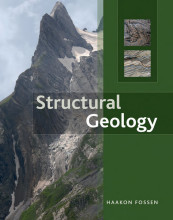Contractional regimes: thust faults
5 important questions on Contractional regimes: thust faults
What are the characteristics of thrust faults?
- fault with dip slip kinematics that cuts up-section towards the earth's surface
- leads to repetition of stratigraphy
- puts older rocks on top of younger rocks
- puts high grade rocks on top of low grade rocks
- shortens layers (crust) and thus leads to thickening of layers/crust
Characteristics of Metamorphic Core Complexes:
- mylonite belt separates the metamorphic/plutonic core from the unmetamorphosed
upper plate rocks.
- the mylonites are the ductile expression of detachment fault systems (1-3), which
develops as discrete normal faults under brittle conditions.
- dip angles of detachment faults are generally <300.
- mylonites are formed under non-coaxial deformation conditions; shear sense indicators
indicate uniform sense of shear.
- intensity of deformation decreases from the mylonites downwards into the core.
- fault breccias can occur at the top of the mylonites.
- upper plate deformation is characterized by half graben structures and tilted fault blocks.
Syn tectonic sediments
- Higher grades + faster learning
- Never study anything twice
- 100% sure, 100% understanding
Post tectonic sediments
Critical taper features
- Increasing strength → decreasing
taper angle
2. Resistance to sliding across the basal
detachment
- Decreasing friction at the base →
decreasing taper angle
3. The pore fluid pressure within the
wedge and the detachment
The question on the page originate from the summary of the following study material:
- A unique study and practice tool
- Never study anything twice again
- Get the grades you hope for
- 100% sure, 100% understanding































